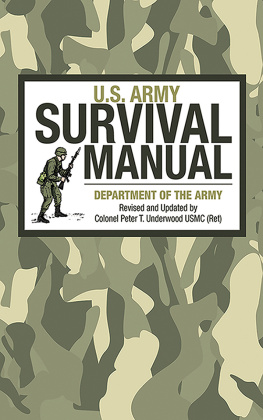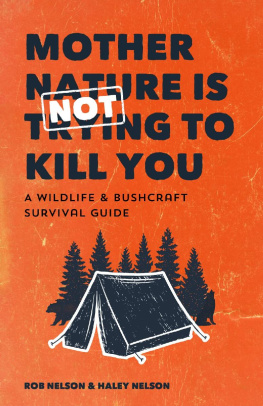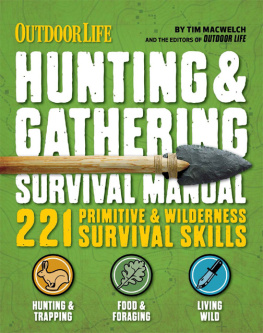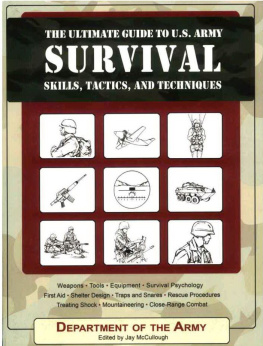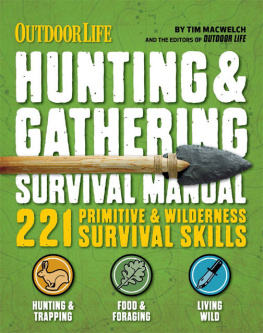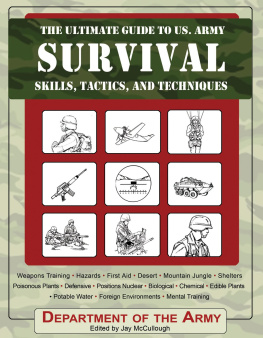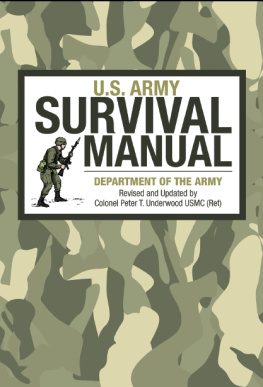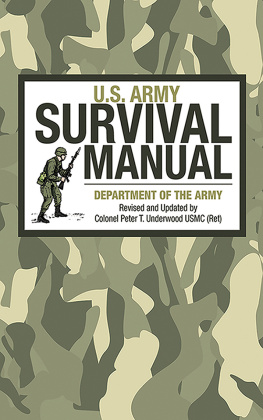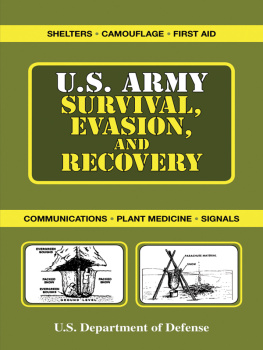Underwood - U.S. Army Survival Manual
Here you can read online Underwood - U.S. Army Survival Manual full text of the book (entire story) in english for free. Download pdf and epub, get meaning, cover and reviews about this ebook. year: 2013;2010, publisher: Skyhorse Publishing, genre: Home and family. Description of the work, (preface) as well as reviews are available. Best literature library LitArk.com created for fans of good reading and offers a wide selection of genres:
Romance novel
Science fiction
Adventure
Detective
Science
History
Home and family
Prose
Art
Politics
Computer
Non-fiction
Religion
Business
Children
Humor
Choose a favorite category and find really read worthwhile books. Enjoy immersion in the world of imagination, feel the emotions of the characters or learn something new for yourself, make an fascinating discovery.
- Book:U.S. Army Survival Manual
- Author:
- Publisher:Skyhorse Publishing
- Genre:
- Year:2013;2010
- Rating:3 / 5
- Favourites:Add to favourites
- Your mark:
U.S. Army Survival Manual: summary, description and annotation
We offer to read an annotation, description, summary or preface (depends on what the author of the book "U.S. Army Survival Manual" wrote himself). If you haven't found the necessary information about the book — write in the comments, we will try to find it.
Whether youre gearing up for a backcountry trek, preparing for the worst that nature or man can offer, or just want to have a great resource at your fingertips, you need this comprehensive, full-color new edition of the U.S. Army Survival Manual, thoroughly revised by Colonel Peter T. Underwood, USMC (Ret.). Ideal for military personnel, outdoors enthusiasts, and anyone who wants to be ready for anything, this is a thorough road map for all areas of wilderness survival, including:
- Erecting shelters and protecting yourself from the elements
- Making weapons and utensils
- Fashioning traps for wildlife wrangling
- Preparing food from wild plants
- Identifying poisonous snakes and lizards, edible mushrooms, and cloud formations
From basic first aid to in-depth, step-by-step instructions on overcoming major obstacles and handling emergencies, this guide clarifies all aspects of survival using tactics derived from those whose lives depend on it.
**
About the AuthorThe U.S. Department of the Army is headquartered at the Pentagon in Arlington, Virginia, and authors The Soldiers Guide, The Complete Guide to Edible Wild Plants, U.S. Army Ranger Handbook, U.S. Army Hand-to-Hand Combat, U.S. Army First Aid Manual, U.S. Army Weapons Systems, U.S. Army Special Forces Handbook, U.S. Army Guide to Boobytraps, U.S. Army Explosives and Demolitions Handbook, U.S. Army Special Forces Guide to Unconventional Warfare, and U.S. Army Special Forces Medical Handbook.
Colonel Peter T. Underwood, U.S. Marine Corps (Ret.), holds a BA from the Virginia Military Institute, an MA in history from Duke University, an MA in national security and strategic studies from the Naval War College, and is also a graduate of the Air Command and Staff College and the Armed Forces Staff College. His career has included multiple assignments in the Far East and Europe, and he is a veteran of Operations Desert Shield/Desert Storm, Desert Fox, and Southern Watch. His staff assignments have been at the battalion, regimental, air group, division, component command, and unified command levels. He has also served as a history instructor at the U.S. Naval Academy and as Professor of Strategy at the U.S. Naval War College. He currently works as an independent consultant.
Underwood: author's other books
Who wrote U.S. Army Survival Manual? Find out the surname, the name of the author of the book and a list of all author's works by series.

